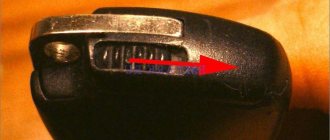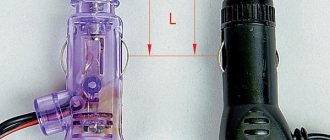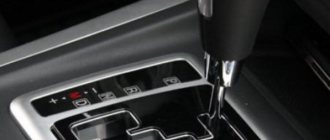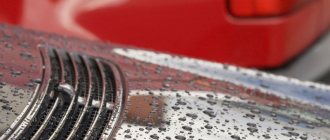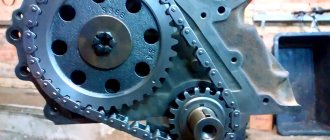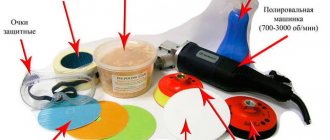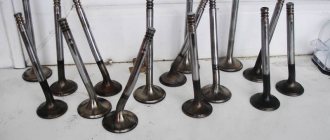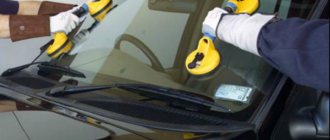The device of a robotic gearbox with two clutches
1 — input shaft of even gears;
2 — input shaft of odd gears and reverse;
3 - oil pump;
4 - double clutch;
5 — hydraulic switching mechanism;
6 — gear engaged sensor;
7 — oil filter;
8 — electrohydraulic unit.
The main advantages and disadvantages of automatic transmissions are known: they are convenient in everyday use, gears are switched without interrupting the power flow. But you have to pay for this with higher fuel consumption and worse dynamics. With mechanics, the opposite is true: it is cheaper, more economical, but not everyone likes to make countless movements with their arms and legs. The solution was found in a robotic transmission with two clutches. Such a unit changes gears on its own and is not inferior to manual transmissions in terms of efficiency.
This unit has two rows of gears, each connected to the engine flywheel through its own clutch. One row is odd gears and reverse, the second is even. During acceleration they switch sequentially. The car starts off in first gear, and the gearbox is already in second gear, but torque is not transmitted through it - the clutch is disengaged. As soon as you need to switch to an overdrive, the discs of the first clutch will open, and the other, on the contrary, will come together. When second gear is engaged, third gear is already ready in another row. The process goes quickly, without jerks or interruptions in the power flow. And the efficiency of the transmission is the same as that of a conventional manual gearbox, hence the high efficiency.
The algorithm for switching to downshifts depends on the degree of pressure on the accelerator, the intensity of deceleration, and vehicle speed. For example, from the sixth gear the box can jump straight to the second, only for a fraction of a second lingering at the fifth speed of the parallel row.
Torque distribution diagram in a dual clutch box.
The first (solid line) and second (intermittent) gears are engaged, but only one clutch is closed and only the first-stage gears transmit torque. The second waits for the electronics to switch the clutch:
Blog Haval F7. Minus 50: what’s with the DCT “robot” and other technical nuances
Finally got a car from work for the weekend. Before completing paper formalities, a detailed inspection is required. We counted dents and scratches, no hernias were found on low-profile tires, you can skip the “glass” column. A torn CV boot and a leaking rear left shock absorber were identified.
...The thermometer shows -53°C. The salon is “not Tashkent”. From the outer deflectors it blows cold. The engine speed fluctuates and the check light is on. The fifth door does not open. The Chinese radio sometimes freezes.
And this is on a 2021 model car! Eh, Drom still had to take the new UAZ Patriot. Shock content would be guaranteed.
Three letters
I dreamed of what the Ulyanovsk all-terrain vehicle would look like in this situation. After the domestic SUV, Hawale seems to be a model of comfort and reliability. Readers dreaming of an F7 are probably primarily interested in how the DCT “robot” is doing.
The gearbox, like the whole car, feels good. The mileage in Yakutia is about 4000 km so far. Previous dromomobiles covered 30,000–40,000 km per season. So that life doesn’t seem like honey, we went out of town for the winter, so to speak, off-road.
The F7 rolls easily on fresh, powdery snow with a vigorous drive, but you still have to keep your eyes peeled. Even when partially loaded, ground clearance is barely 150 mm - a significant disadvantage of the independent rear suspension.
On an ascent, it is better to take diagonals from overclocking. When simulating blocking, the front breaks off and the car pulls to the side.
Once again I praise the high bumpers. The X-trail in this place scooped up snow with its lower “lip” a couple of times.
A more or less dense crust becomes an insurmountable obstacle. It is impossible to control traction. Up to 1800 rpm, the wheels tense up, but do not spin, then they suddenly slip into the axle box - to the delight of the photographer.
On ice, where there is less chance of ripping open your plastic belly, you can have some fun. It's a pity that the shot didn't turn out to be spectacular. Sensing the tachometer near the red zone, even in manual mode, the “robot” slips into second gear. Theoretically, the inexhaustible flow of torque forces and the turbine still continuing to perform artificial respiration are not able to keep Haweil in good shape even on a slippery surface in shallow, loose snow.
There is absolutely no indication of the driving wheels. By the way, the already mentioned transmission kicks are not felt in 2WD mode. The play on the cardans is insignificant. Most likely, the impact occurs when the rear-wheel drive electronic clutch is connected.
But let's get back to the box. On the Haval owner forums, the biggest threads predictably sprout around the DCT7 transmission.
The questions mainly concern proper operation and service life extension. Someone switches to neutral in traffic jams. Like, I always did this on the Ford Focus, thereby avoiding expensive repairs. The second one advises driving in manual mode. But in F7 the gears are very short, and playing with the steering wheel paddles is tiring. Another theorist recommends pressing the brake pedal harder at traffic lights. So that the “robot” completely disconnects the transmission from the engine.
Judging by the article in the popular magazine “Why DSGs are dying,” commentators are wrong on all counts. For example, in neutral, first and reverse gears are turned on. On the drive - first and second. Excessive joystick movements only accelerate the wear of synchronizers and gear fork bearings.
But they are right about one thing - it is better to shorten the interval for changing the oil and filters of the “robot”. The mechatronics and the box itself have a common oil circuit. Wear products from friction clutches and gears get into the gear control valves, clog sensor magnets, etc. As a result of off-road driving or an aggressive driving style (especially after chip tuning), the transmission oil overheats and loses its properties.
More details about all the nuances can be found by searching the relevant queries on YouTube. Search keywords: "Autostrong on DSG6". Or don't watch it so you can sleep better at night. According to Gerhard Henning, who is responsible for transmissions at Great Wall Motors, they took into account the experience of the Germans when creating the DCT7, preventing possible breakdowns, paying special attention to the strength of the actuators.
As a result, the average resource should be at least 300,000 km. Not least thanks to Shell S5 DCT11 synthetic oil specially developed for this “robot”. The optimal interval between replacements is 100,000 km. And the pour point is -48°C.
Insulation
In order not to have to remove the bumper again, I simply tightened the penofol with zip ties and covered it with wide electrical tape for aesthetics. The car is driven in the city at low speeds, so it was decided not to cut out the window for the intercooler yet.
It would be great to direct the heater exhaust corrugation to the gearbox. But making any changes or deviations from the installation rules automatically voids the warranty.
The felt was inherited from Dromov's Hover. In the comments to the previous post, questions arose for him. I don’t use the car blanket and I don’t recommend it to my friends. Small particles of fiberglass can enter the respiratory tract of both a car and a person.
The pipe has been removed so that the engine can breathe warm air from under the hood. In principle, you can drive around the city like this, but on the highway, due to the formation of condensation, the throttle valve may stick or the crankcase ventilation may become clogged. The experience of Yakut residents shows that too cold air is also harmful to the turbine. Over time, it begins to drive oil.
Passengers in the second row complained about the cold. Especially in the lower back and legs. A partition made of dense foam foam partly solves the problem. Plus, it allows the interior to warm up faster in the morning and retains heat when opening the trunk. By the way, the flow to the driver’s feet also leaves much to be desired in terms of warmth.
And then the forty-degree frosts hit
There is an opinion that the air in Yakutia is dry. (I confess, I myself have written about this more than once in blogs of Russian cars). In villages, outside the city, maybe so. But in Yakutsk the air is humid. Therefore, for two months there is frost on the branches and fog. It’s just that in winter there is almost no wind and the cold is not felt as strongly as, for example, in the tundra.
I won’t say that Haweil can withstand frosts within 40-50 degrees. The salon was filled with extraneous sounds. The engine has clearly become louder, and its operation is accompanied by severe shaking, as if the pillows were sagging. After a long stay, the shock absorbers become so dull that it seems that if you drive over a coin you can determine its value.
For the first 15 minutes, the “robot” is in no hurry to switch again. The engine howls at two thousand, then strains. But as soon as the oil warms up, everything falls into place. No jerks, misfires, chaotic switching.
When the car is started, the button does not close. It’s good that the castle doesn’t freeze even at minus 47°C. The designers of Solaris and Creta have a lot to learn.
By the way, in the same owners’ club I spotted a couple of life hacks. To make a quick turn, for example, in a narrow space in several steps, you can engage reverse before coming to a complete stop. Roll up to the curb - brake - accelerate back and in advance transfer the joystick back to drive.
To prevent the pads from sticking to the discs due to the automatic electronic brake, after “parking”, it turns out that you just need to press the “handbrake” button back.
The door seals also become dull. Before I had time to drive away from Larisa’s house, the brakes squealed and I hung on my seat belt. It turned out that the door did not close completely and the electronic handbrake was activated.
Yakut residential yards are a paradise for auto fixers. Nobody follows the right-hand rule. The main one is the one who drives straight or on a more well-trodden road. Another factor is prestige. A swimming black stingray of unknown brand is respected by other road users.
The font of the thermometer is small, and it does not warn about ice with a “snowflake”. And it doesn’t seem to drop below minus forty. The synthetic brake fluid does not freeze even on the highway.
Yakut proverb: if the quadcopter does not fly in the cold, then Mohammed-bye goes to the mountain
Spikes or Velcro? And at minus 45?
One day, in the cold winter, the idea came to compare friction tires and studs. As a second test subject, a studded Nissan X-trail turned up, the curb weight of which is approximately equal to the Haweil: 1659 and 1670 kg, respectively. The discs also turned out to be approximately equal in drilling, offset and outer diameter of the wheels.
After the first stage of testing, we stopped by to change the wheels. The tire jack is pneumatic. They refused to use the usual rolling ones - the hydraulics are freezing.
On Haweil the wheels came on without any problems. And on the X-trail the master had difficulty fitting the nuts onto the studs. The discs do not fit tightly. Why? The drilling and offset seem to match. But I forgot about the third parameter - DIA. The diameter of the central hole is. On the F7 it is 64.1 mm, and on the Nissan it is 66.1. We've arrived!
The rear suspension appears to be fine at first glance. Dry shock absorbers, boots, drives, silent blocks intact
The front also seems to be fine, except that there are no side plastics. The command post is open to all winds and puddles. In this case - snow.
Nissan, for example, has protective plastic.
Nevertheless, the preliminary results are impressive. The Havale brakes better than the Nissan on the asphalt, even with faulty shock absorbers. And on the ice, provided that the sun is not shining, Nissan loses only half a length. But these results are conditional. If you want to take part in the test, write to
Let's finally put an end to the dispute between Velcro and spikes
